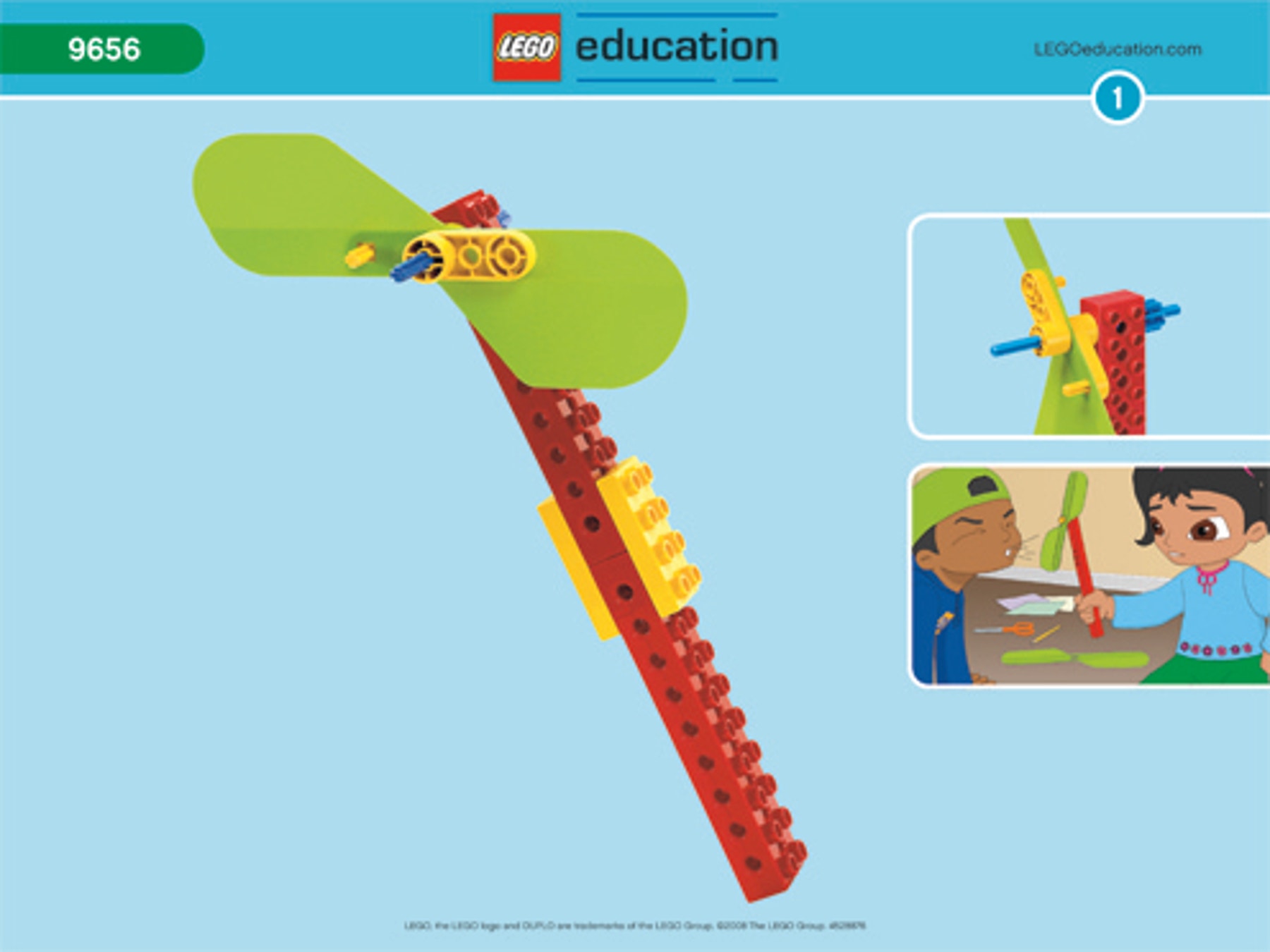Hot Day
Applying knowledge and skills related to wind force, gears or pulleys, rotation, and fair testing.

The Problem
(5-10 Minutes)
The sun is high in the sky on a beautiful day. Sam and Sara are at the beach, but it is too hot to do anything. Not even a nice cool ice cream can help Sara cool down. They could do with a cool breeze!
Can you help Sam and Sara build a fan that can create a nice cool breeze?

Design Brief
(3-5 Minutes)
Design and make a fan that:
- can stand on its own
- uses gears or pulleys to make the strongest breeze possible
- can be turned by hand


Fair Testing and Fun
(10-15 Minutes)
Can the fan stand on its own?
Try it and see.
How does the fan turn?
Does it use gears or pulleys? Show and tell.
How strong is the breeze?
Make a wind tester: dangle a strip of paper, wool or thread from your fingers.
Hold it in the breeze; the more it moves about, the stronger the breeze.
Now move away from the fan until the wind tester stops moving.
Measure the distance to the fan. The further, the better.
How ‘powerful’ is the gearing system?
Turn the handle once – slowly. As you are turning the handle, count the number of turns (rotations) of the fan. The more fan-rotations per turn of the handle, the better the fan.

Extra Challenge
(10-15 Minutes)
Design new and bigger fan blades to make your fan even more efficient.
Make the most colorful fan ever!
Teacher Support
Students will be able to apply knowledge and skills around:
How movement can be described in many ways
How to use wheel and axels for a specific purpose
Solving problems from a specific design brief
9656 Early Simple Machines Set (two students per set recommended)
Cardstock
Crayons
Scissors
Sticky tape
Ruler
Paper, wool or thread
NGSS
Disciplinary Core Ideas: Physical Science
1 MS-PS2 Motion and Stability: Forces and Interactions
Crosscutting Concepts
Cause and effect: Mechanism and explanation
Systems and system models
Structure and function
Science and Engineering Practices
Asking questions and defining problems
Developing and using models
Planning and carrying out investigations
Analyzing and interpreting data
Constructing explanations and designing solution
Engaging in argument from evidence
Obtaining, evaluating, and communicating information
Common Core State Standards for Mathematics
Mathematical Practice
MP1 Make sense of problems and persevere in solving them
MP2 Reason abstractly and quantitatively
MP5 Use appropriate tools strategically
MP6 Attend to precision
MP7 Look for and make use of structure
Measurement & Data
K.MD.A
Writing Standards
W.K.2 / W.1.2 / W.2.2
Speaking and Listening
SL.K.3 / SL.K.6 / SL.1.3 / SL.2.3 / SL.2.4




